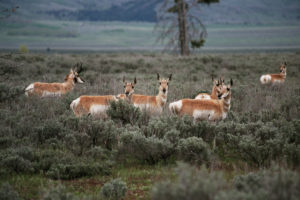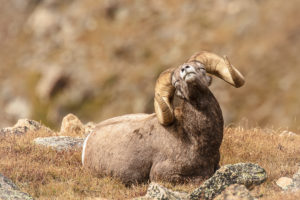We have much more to do and your continued support is needed now more than ever.
More Methane, More Problems: Future for Bighorn Sheep & Pronghorns Imperiled

Overriding concerns of climate scientists and wildlife biologists, the Administration seeks to to weaken the Environmental Protection Agency’s standards limiting methane pollution from new oil and gas facilities out West, furthering the destruction of irreplaceable wildlife habitat and fueling the flow of superpollutants that increase the impact of climate change.
Development from oil and gas extraction — and the climate-disrupting, long-term consequences of increasing methane emissions into the atmosphere — destroys the habitat of pronghorn, bighorn sheep, and other wildlife of the West.
Protect pronghorns & bighorn sheep: Tell the Environmental Protection Agency to strengthen, not weaken, protections against dangerous oil and gas methane pollution and reject the new proposal that severely weakens oil and gas industry rules!
Take ActionImmediate & Long-Term Pronghorn Habitat Destruction
Our Wildlife Guide shares helpful facts about this species strongly associated with the region and revered by wildlife enthusiasts and sportsmen alike:
Pronghorn are found only in North America. Their natural range extended from southern Canada to northern Mexico. Pronghorn like open plains, fields, grasslands, brush, deserts, and basins. Between the summer and winter, pronghorn migrate between feeding grounds to survive the harsh winter.
According to a National Wildlife Federation report, in Southeast Montana, Northeast Wyoming, and along the Colorado-Wyoming border, pronghorn are vulnerable to energy development and have seen population losses over the last three decades.

As increasing exploration and drilling for natural gas has expanded industrial development in these areas, fences and destruction from fracking are blocking pronghorn migration and restricting their habitat.
Pronghorn are also severely impacted by rising temperatures, drought, and an increase in the spread of diseases due to climate change. As our climate continues to change, these impacts will only become more pronounced, affecting wildlife, economic activity, and outdoor traditions.
Bighorn Sheep: Challenged by a Changing Climate
Bighorn sheep, reknowned for their unique set of horns, are also a key part of their region’s ecosystem. Our Wildlife Guide notes:
Bighorn sheep live in the western mountainous regions of North America, ranging from southern Canada to Mexico. Their steep mountainous habitat, with ledges sometimes only two inches (five centimeters) wide, provides cover from predators such as coyotes, golden eagles, mountain lions, bears, and Canada lynx.

A recent National Park Service study found that rising temperatures and drought limit vegetation and spring water for bighorn sheep. This imperils the survival of young bighorn sheep, as ewes depend on a daily supply of their mother’s milk.
Take Action




















